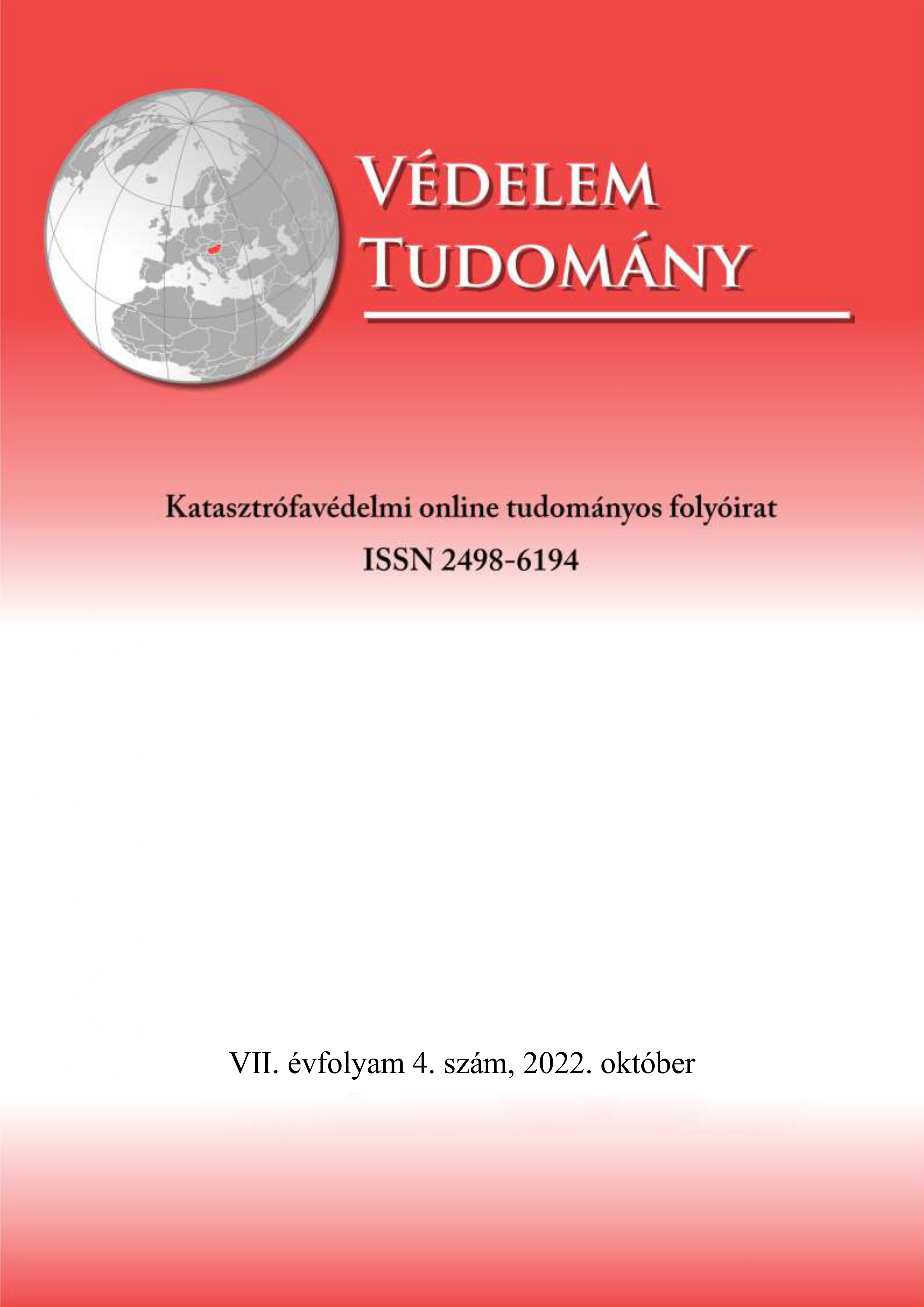Comparison of properties of homogenous and heterogenous hardened cement pasts exposed to high temperature at different ages
Abstract
Fire and high temperatures are the most destructive effect on concrete structures. To better understand the behaviour of the concrete exposed to high-temperature series of tests were carried out on homogenous and heterogenous hardened cement pastes. At three ages (28, 90, and 180 days) with three water-cement ratios (0.300; 0.250; 0.222), at eight different heat steps (from 20 °C to 900 °C), pure Ordinary Portland cement was tested. A study at the same ages and heat steps on heterogenous cements with two dosages (20% and 35%) of cementitious material with constant water-fine ratio was also carried out. The examined fines were powdered quartz, magnetite, boron carbide, powdered chamotte, and powdered perlite. Our experiment showed that the local maximum value between 200-300 °C of the relative residual compressive strength of Ordinary Portland Cement specimens decreased 10-30% from the values of 28 days old specimens to the 180 days old samples. However, the lowest strength value was at least 85% of the initial strength. The disappearance of the local strength maximum points is also noticeable in the rates of the Integrated Temperature Endurance. Among the cementitious materials, boron carbide and perlite eventuated remarkable results. The boron carbide resulted residual strength increment between 600 °C to 900 °C and ended 43-56% of the initial strength in all ages and water-fines ratios. The perlite powder containing cement pastes produced nearly constant, at least 80-90%, residual compressive strength up to 600 °C.
References
Abdelmelek, N., Lubloy, E. The impact of metakaolin, silica fume and fly ash on the temperature resistance of high strength cement paste. J Therm Anal Calorim 147, 2895–2906 2022. https://doi.org/10.1007/s10973-021-10700-x
Alonso, C., Andrade, C., Castellote, M. és Khoury, G. A. Effect of Heat on Concrete: Microstructure – Solid Phase. Course on Effect of Heat on Concrete. International Centre for Mechanical Sciences. 2003. június 9-13., Udine, Olaszország
Elsen, J., Mertens, G., Snellings, R. Portland cement and other calcareous hydraulic binders: History, production and mineralogy. In: Christidis, G. E. Advances in the characterization of industrial minerals. European Mineralogical Union and the Mineralogical Society of Great Britain & Ireland. Egyesült Királyság. 2011. https://doi.org/10.1180/EMU-notes.9.11
Fehervari, A., Gates, W.P., Gallage, C., Collins, F. A. Porous Stone Technique to Measure the Initial Water Uptake by Supplementary Cementitious Materials. Minerals. 2021. 11. 1185. https://doi.org/10.3390/min11111185
Fehérvári, S. Betonösszetevők hatása az alagútfalazatok hőtűrésére. PhD értekezés. BME Építőanyagok és Mérnökgeológia Tanszék. Budapest. 2009.
Fehérvári, S. Betonösszetevők hatása az alagútfalazatok hőtűrésére. ISBN: 9783330813208. Globedit. Németország. 196 p. 2016.
Fehérvári, S., Nehme, S.G. How portland and blended cements resist high temperatures of tunnel fires?. in Concrete Structures. 2009. pp 24-29. 2009.
Habert, G., Miller, S.A., John, V.M. et al. Environmental impacts and decarbonization strategies in the cement and concrete industries. Nat Rev Earth Environ 1, 559–573. 2020. https://doi.org/10.1038/s43017-020-0093-3
Humphreys, K; Mahasenan, M. Towards a sustainable cement industry. Substudy 8: Climate change. Svájc. 61 p. 2002.
Khoury, G. A. Majorana, C. E. Pesavento, F., Schrefler, B. A. Modelling of heated concrete. Magazine of Concrete Research. 54/2. pp 77-101. 2002.
Lublóy, Majorosné É. E. Betonanyagú szerkezetek tűzállósága. Akadémiai doktori értekezés. MTA. Budapest. 111 p, 2021. http://real-d.mtak.hu/1401/
Lublóy, Majorosné É. E. Tűz hatása betonszerkezetek anyagaira. PhD értekezés, BME Építőanyagok és Mérnökgeológia Tanszék. Budapest. 2008
Lublóy. É., Kopecskó, K., Balázs, Gy. L. Restás, Á., Szilágyi, I. M. Improved fire resistanceby using Portland-pozzolana or Portland-fly ash cements. Journal of Thermal Analysis and Calorimetry. 129, pp 925-936. 2017.
Sabri, M.Z.H.A., Malek, R.A., Omar, A.A., Ismail, K.N., Study of Fly Ash Concrete Exposed to Elevated Temperature. KEM. 2022. https://doi.org/10.4028/p-13p036
Schneider, U., Horvath, J. Behaviour of Ordinary Concrete at High Temperature. Vienna University of Technology. Institute of Building Material. Building Physics and Fire Protection. Vienna, Austria, 2002, in Khroustailev, B. M., Leonovich, S. N., Schneider, U. Behaviour of Concrete at High Temperature and Advanced Design of Concrete Structures. Proceedings of the International Conference. Construction and Architecture, Minsk, 2003.
Scrivener, K.L., John, V.M., Gartner, E.M. Eco-efficient cements: Potential economically viable solutions for a low-CO2 cementbased materials industry. Cement and Concrete Research. 114. 2–26. 2018. https://doi.org/10.1016/j.cemconres.2018.03.015
Short, N., Purkiss, J. Petrographic Analysis of Fire-Damaged Concrete. in Gambarova, P. G., Felicetti, R., Meda, A. és Riva, P. Proceedings of the Workshop: Fire Design of Concrete Strucutres: What now? What next?. Milan Inversity of Technology. 2004. december 2-3., pp 221-230. Milánó, Olaszország 2004.
Stefanidou, M., Vasiliki P. Influence of perlite and aerogel addition on the performance of cement-based mortars at elevated temperatures. 2020 IOP Conf. Ser.: Earth Environ. Sci. 410012111
Wang, H. Y. The effects of elevated temperature on cement paste containing GGBFS. Cement and Concrete Composites, 30(10), 992-999. 2008.




